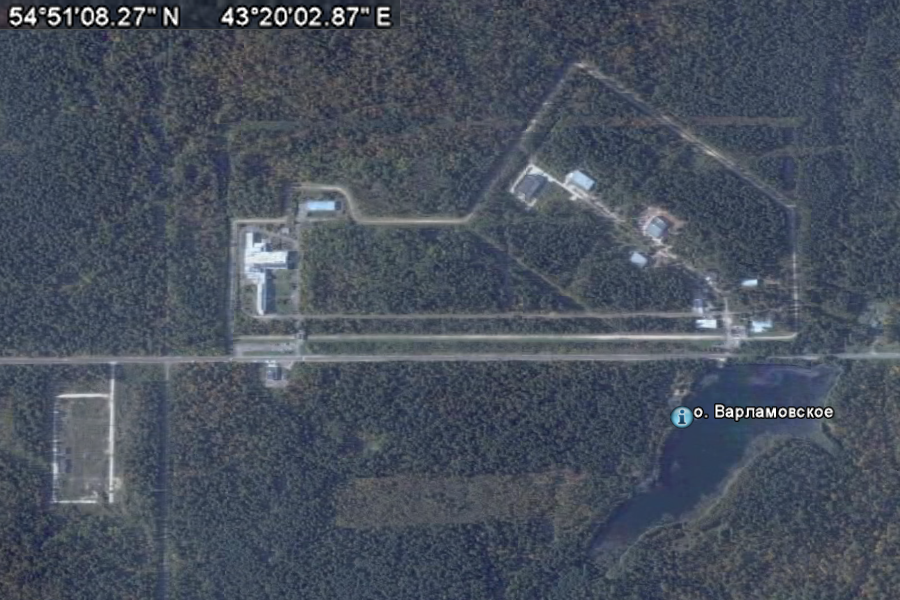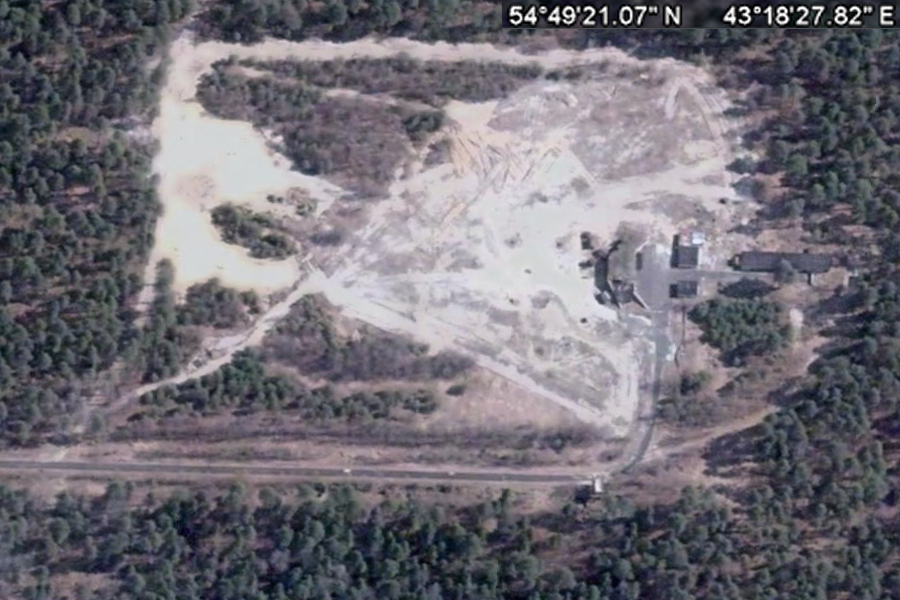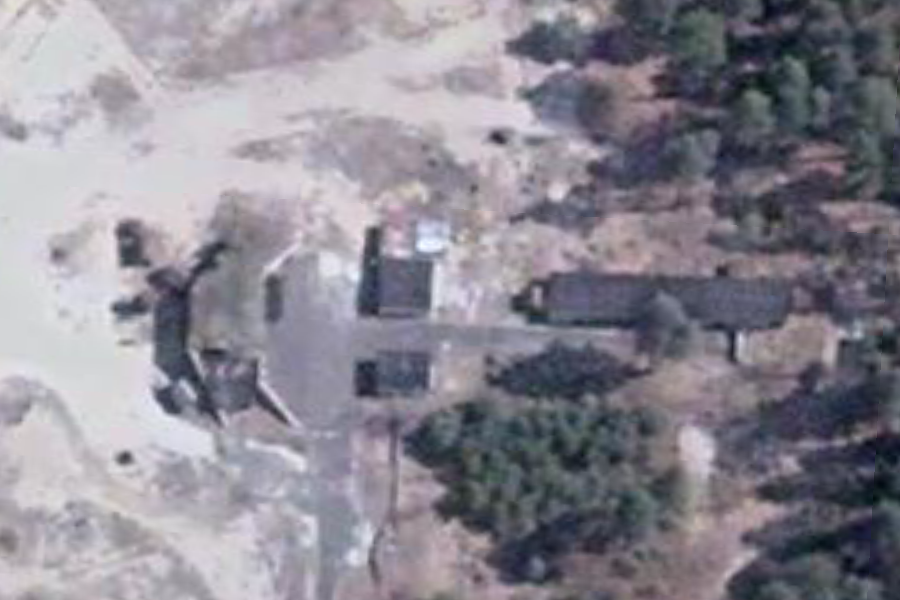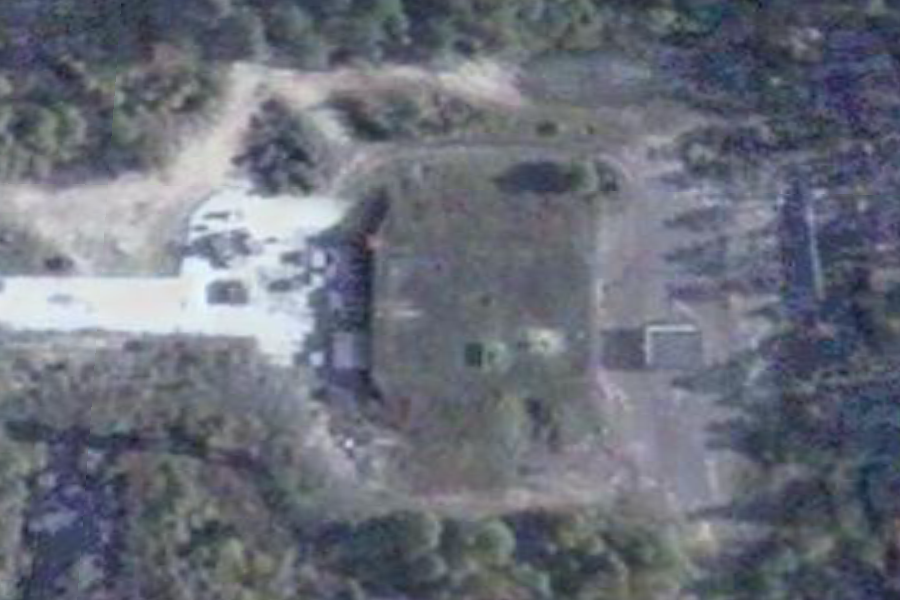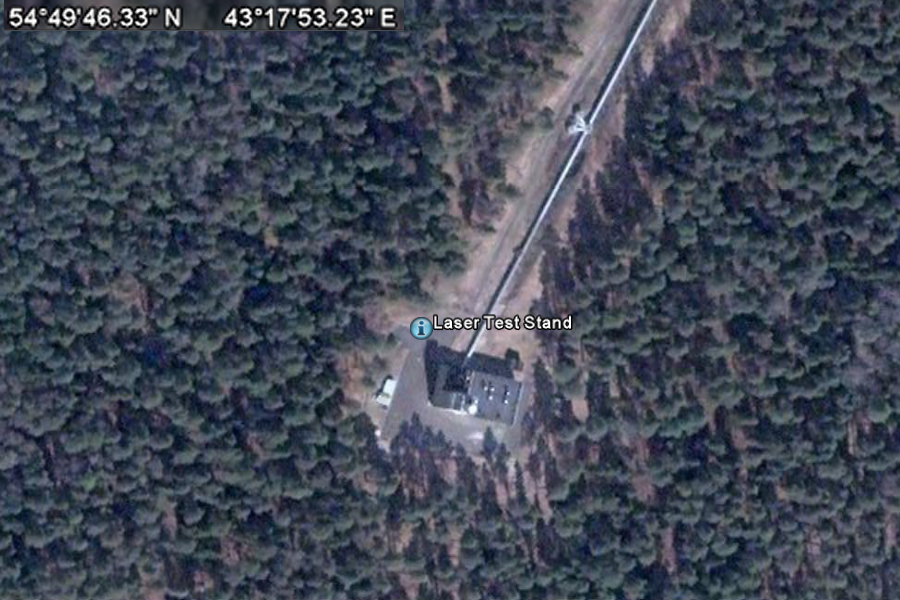|
|
||||||
|
Russia's Los Alamos Russian Federation, Province of Nizhny Novgorod 54° 56′ 0″ N, 43° 19′ 0″ E ..
..
|
||||||
|
..
|
||||||
|
Areas South of Sarov ..
These images are in no particular order and start at the south end of the site. Not a lot is yet known about most of the areas as these are from a recent Google scan (early 2009). As we get details we will add them as captions. There is also a lot of new construction going on, like the area above. We can see what looks like a bunker or start of a tunnel entrance in the first area... |
||||||
|
Area S01 ..
.. |
||||||
|
Sarov
Sarov
(Russian: Саро́в) is a closedtown in Nizhny Novgorod Oblast, Russia.
Until 1995 it was known as Kremlyov (Кремлёв), while from 1946 to
1991 it was called Arzamas-16 (Арзама́с-16). The city is still
considered a closed town and is off limits to foreigners. It is the Russian
center for nuclear weaponry. Population: 87,652 (2002 Census).
The town is located mostly on the territory of Nizhny Novgorod Oblast, but a part of it spans into the Republic of Mordovia. History
The history of the town can
be divided into two completely different periods. In the earlier history
of Russia it was known as a holy place for Orthodoxy, for its monastery,
that gave Russia one of its greatest saints, St.
Seraphim. Since 1940s it has gradually become the center for research
and production of Soviet and later Russian nuclear weapons.
The history of Sarov started in the 12th–13th centuries, when a large Mordovian settlement was found on its spot. In 1298, the town was taken over by Tatars. The town took its original name from being the site of the Sarova monastery next to the Sarovka River, the waters of which thought to have healing powers. In 1664, monk Theodosius first settled on Sarov mountain. The first Church of Sarov tenement was found in 1706. Saint Seraphim was living in Sarov from 1778 to 1833. In 1903, the town was visited by the Russian royal family. At that time it had nine churches, including one underground. Around 320 monks lived in the monastery. In 1923, the monastery was completely closed, the monks faced bolshevik repressions, and many were executed. During WWII, the monastery buildings were used as factories for producing rockets for BM-13 "Katyusha" rocket launchers. In 1946, the All-Russian Scientific Research Institute of Experimental Physics—a nuclear weapons design facility that would become known in the West under the acronym VNIIEF—was built. The town was called Arzamas-75 at first, because it is 75 km outside Arzamas. Because this name was deemed to give too much information as to its location, the town received a code name of Arzamas-16 and was removed from all unclassified maps. In 1954, Arzamas-16 was given a town status. Much of the town was built by German POWs and the architecture has a definite German/European flavor. The town houses the Russian Federation Nuclear Center and "Atomic Bomb" museum which has a number of casings of Soviet-era nuclear weapons and photographs of those involved in their production. Most access is by train, which, after a security stop and inspection, is allowed into the town to disembark passengers. A small airport on the facility is generally for government aircraft only, and visitors usually fly to Nizhny Novgorod airport and then drive three hours. The town is surrounded by fences patrolled by the military. Foreigners, and even Russians who do not live in Sarov, are not allowed to enter the town without permission. Foreigners who visit on business must surrender their passports, phones, and cameras to security while they are in the facility, though some documentary filmmakers have shot footage inside the town walls. The location of the closed town is difficult to find on the maps. This is because a large portion of it is located on the grounds of the P.G.S. State Park in adjacent Temnikovsky District of the Republic of Mordovia. In 1993, it became a sister city to Los Alamos, New Mexico, the site of the U.S. nuclear weapons design laboratory (Los Alamos National Laboratory, or LANL). Scientists from LANL and VNIIEF have cooperated on various arms control and nuclear safeguards programs, under which the Los Alamos scientists learned, to their amusement, that their Russian colleagues paid homage to their American rivals by irreverently calling their own laboratory "Los Arzamas." Boris Yeltsin changed the town's name back to Sarov at the request of residents in August 1995. In the present day, the Russian Federal nuclear center is responsible for important decisions concerning the development, production, storage, and utilisation of nuclear weapons; the recycling of radioactive and other materials; and research in fundamental and applied physics. Sister cities
|
||||||
|
Area S02 ..
..
..
...
|
||||||
|
Area S03 ..
VARLAMOVSKOE: Private company
Number of shareholders 1
|
||||||
|
Area S04 ..
This area is in direct line with Area S04 and may be the back door for he underground base
..
....
.. |
||||||
|
Area S05 ....
..
..
..
..
...
.. |
||||||
| FAIR USE NOTICE: This page contains copyrighted material the use of which has not been specifically authorized by the copyright owner. Pegasus Research Consortium distributes this material without profit to those who have expressed a prior interest in receiving the included information for research and educational purposes. We believe this constitutes a fair use of any such copyrighted material as provided for in 17 U.S.C § 107. If you wish to use copyrighted material from this site for purposes of your own that go beyond fair use, you must obtain permission from the copyright owner. | ||||||
|
|










